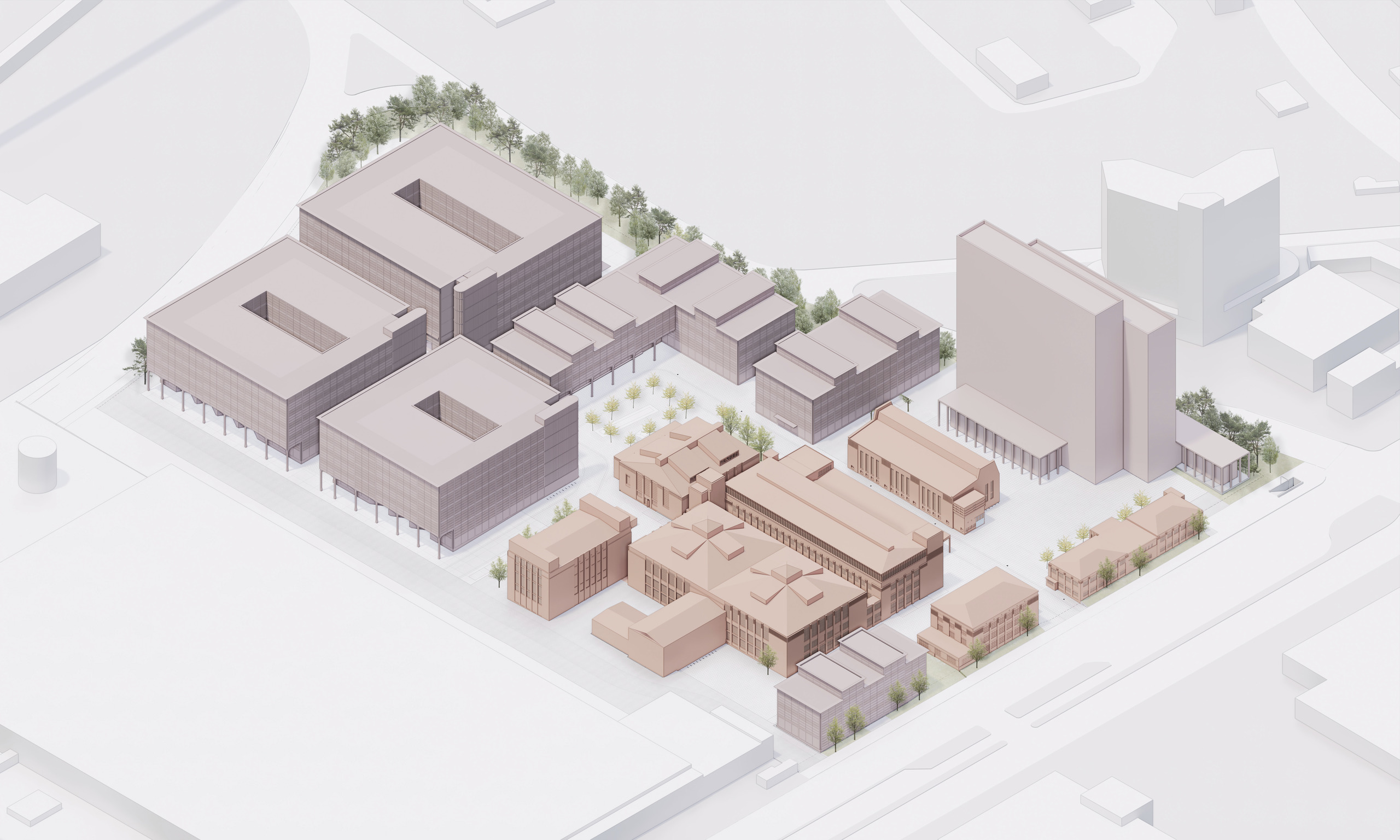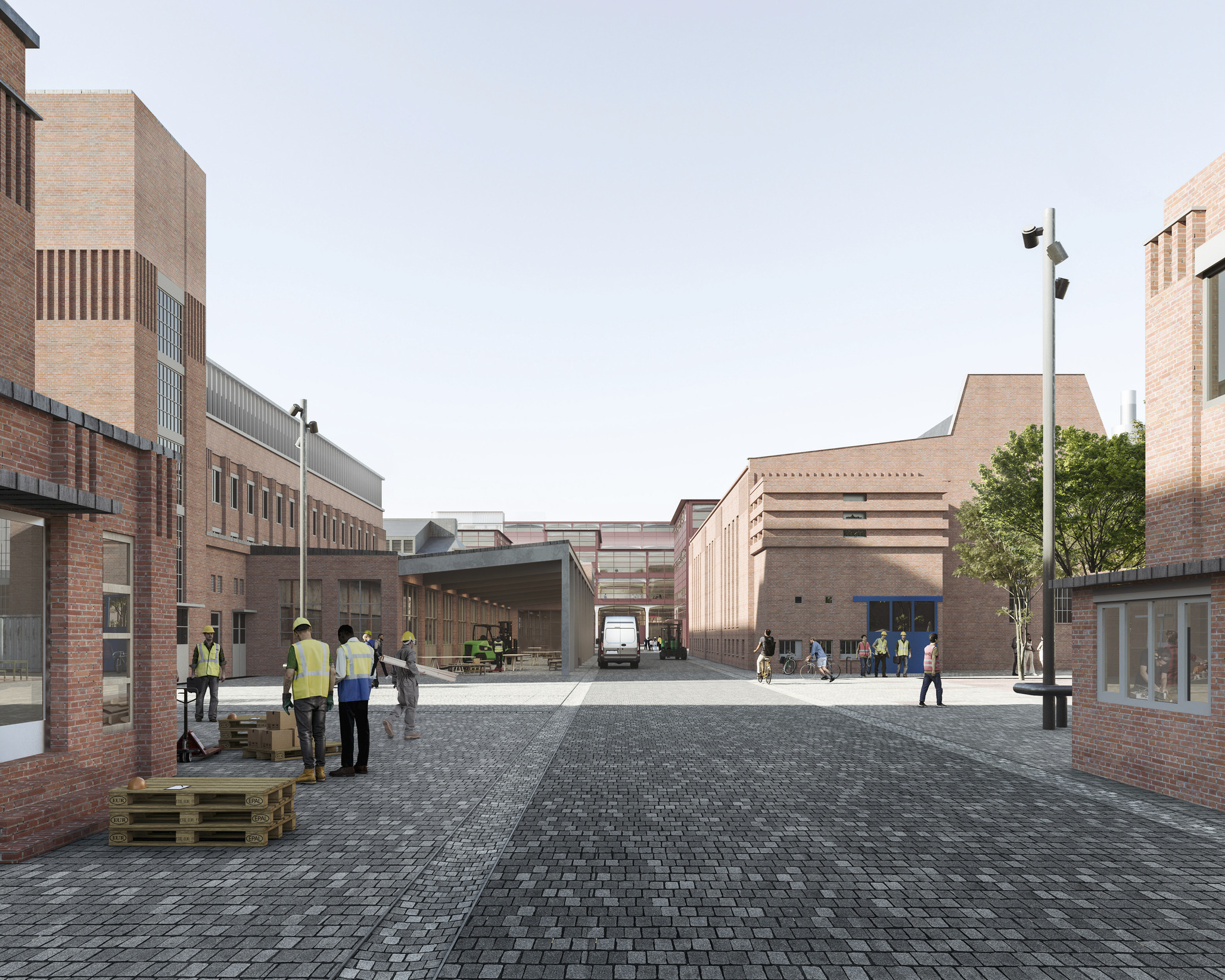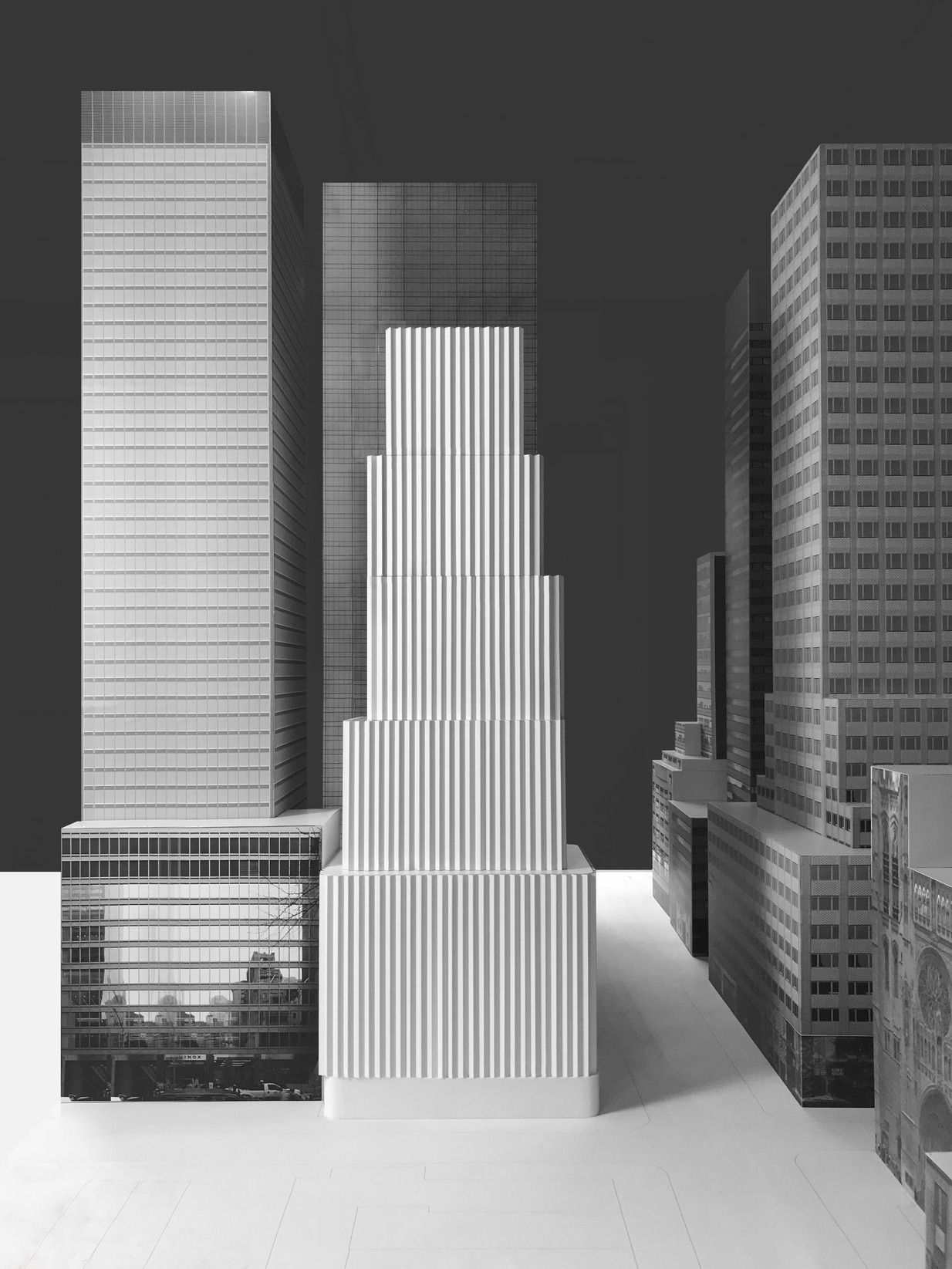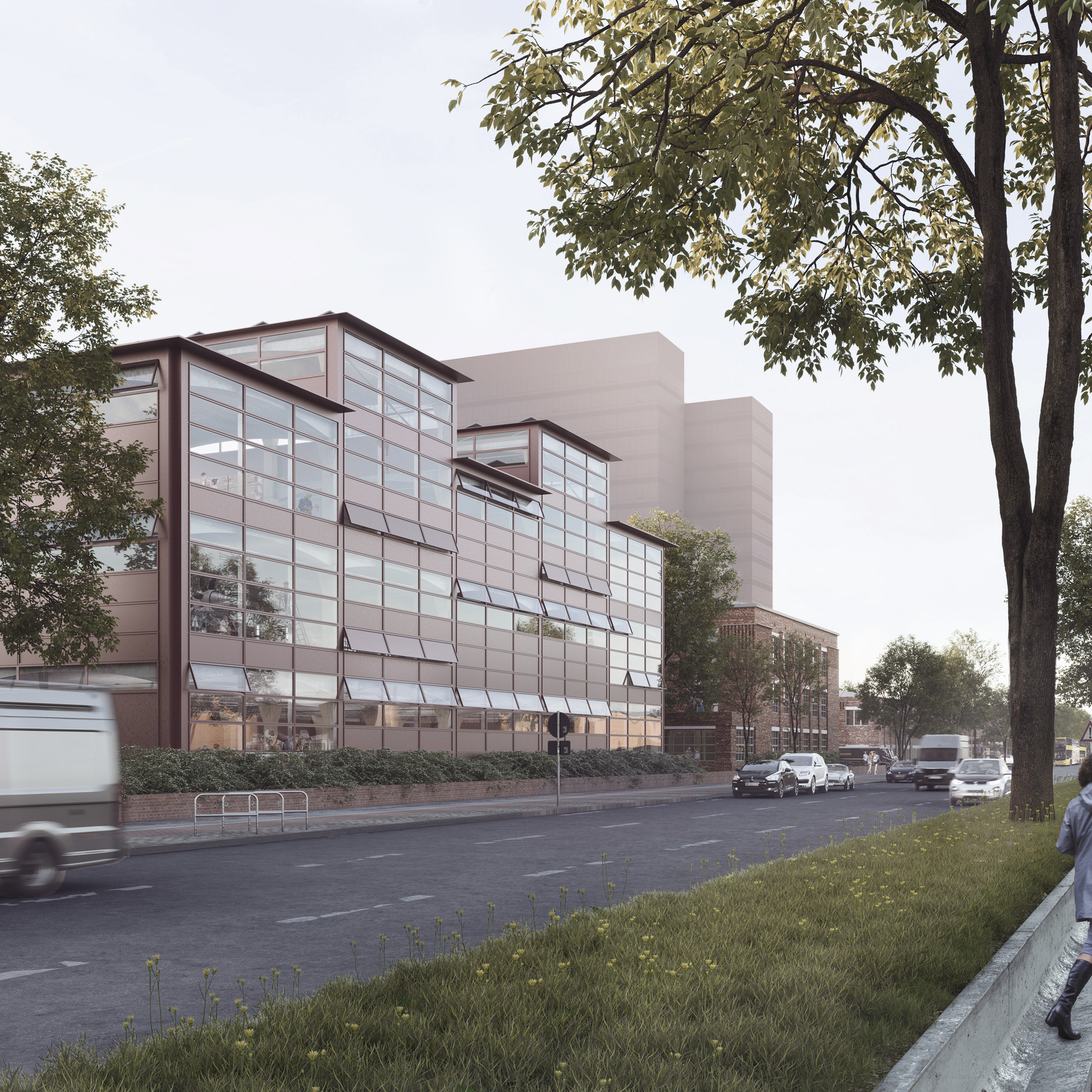Luxwerk masterplan
Berlin, Germany
2022–
Following the closure of the historic Osram glass factory in Berlin’s Spandau district, the masterplan is transforming the LUXWERK Areal into a new urban quarter. The site is part of Siemensstadt, an area that has been shaped by industry for over a century. The listed Osram glass factory, designed in the Neue Sachlichkeit style by Waldemar Pettri, was completed in 1927. The starting point of the project is the search for a contemporary industrial architecture that identifies and re-interprets the site-specific features.
The urban concept is characterised by clear, free-standing building volumes, aligned orthogonally to the Nonnendammallee main road. In terms of scale, position and building heights, the new buildings are oriented towards the existing buildings and evolve towards the south into five-storey courtyard buildings. In the north-west of the site, the masterplan incorporates a 55-metre high-rise building, designed by Eike Becker_Architekten.
A centrally positioned thoroughfare crosses the site from north to south, providing orientation and direct access to all buildings. Two neighbourhood squares extend the central thoroughfare: In the north, the square at the historic entrance next to the generator building functions as a workshop yard; in the centre, the square Platz an der Dannerhalle, takes on the role of a social hub, encompassing a canteen situated in the historic building. The character of the site continues to be predominantly defined by its industrial programme, while additional functions and green open spaces ensure an active neighbourhood.
The 1920s building is refurbished and modernised, preserving the traces of time. Building components lost during the war will be rebuilt while conversions and additions from the decades after 1945 will be dismantled where they negatively affect the appearance. The new architecture adopts the materiality and structure of the existing buildings. A substantial load-bearing structure ensures maximum flexibility of use. Innovative construction methods reduce the material consumption significantly and achieve a circular construction method.
Data and credits
- Competition
- 2022
- Project start
- 2022
- Gross floor area
- 89,000m2
- Client
- BENO 44 GmbH & Co. KG,
represented by AVENTOS Management GmbH - Architect
- David Chipperfield Architects Berlin
- Partners
- David Chipperfield, Christoph Felger, Martin Reichert
- Idea / concept
- Josephin Brewitt, Christoph Felger, Marie-Luise
Schlesinger, Jan Sienkiewicz - Competition team
- Antonia von Bar, Bachir Benkirane, Josephin Brewitt, Philippa Dierson, Simpert Hafenmeier, Moritz Hagemeyer, Benedikt Jährling, Klara Löchte, Julijana Steimle
Graphics: Kerstin Bigalke, Ute Zscharnt - Engineering consultant
- Arup Deutschland GmbH, Berlin
- Landscape architect
- Atelier Loidl, Berlin
- Visualisations
- Atelier Tata, Berlin








